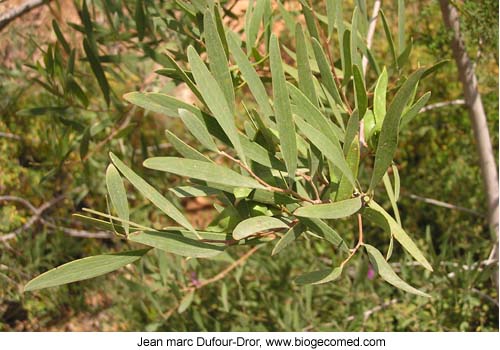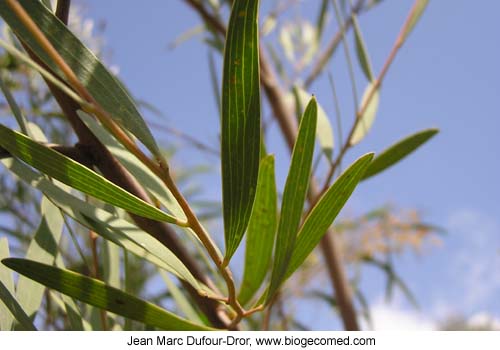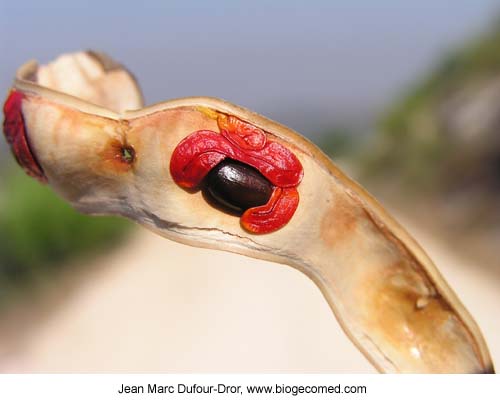|
General
Acacia cyclops A.Cunn.
Mimosaceae
Life form: Evergreen shrub or tree
En: Western Coastal Wattle, Fr: Acacia cyclops
Provenance: Southwest Australia
Distribution in Israel
The western coastal wattle occurs only in the Mediterranean region
of Israel and is found locally in open areas in the central region,
mostly in the Judean Hills. One of the main populations is located
on the hill slopes of the Sha'ar Ha-Gay area on the northern
side of the Jerusalem Tel Aviv Highway (Road 1). The spread of
Acacia cyclops in this area is relatively recent and follows
a large fire that occurred in the mid 1990s.

Proliferation status
Acacia cyclops in Israel is considered an invasive
species, according to terminology suggested by Richardson et
al. (2000).
Acacia cyclops in Israel
The western coastal wattle was introduced in Israel during the
1920s for afforestation purposes. It has been used in mixed plantations
with Acacia saligna. Acacia cyclops was planted
until very recently in the semiarid region of Israel, northeast
of Beer-Sheva.
Acacia cyclops rarely forms pure stands in Israel but
in association with Acacia saligna it can produce a dense
cover and crowd out native vegetation

Control
Unexpectedly, physical control of the western coastal wattle
is effective: Individuals cut close to the ground generally do
not resprout vigorously unlike Acacia saligna trees.
Cutting followed by controlled burnings significantly reduces
the soil seed bank. The unusual efficiency of the mechanical
control on Acacia cyclops is mainly due to its biological
characteristics. It produces about a third as much seed annually
as both Acacia saligna or Acacia longifolia. Moreover,
Acacia cyclops seeds have a short dormancy period, not
exceeding two years.
In the early 1990s a biological control experiment was set in
South Africa with the release of a seed-feeding weevil native
to Australia (Melanterius servulus). This method has so
far proved very effective.

References
Impson F.A.C., Moran V.C. & Hoffmann J.H. (2004) Biological
control of an alien tree, Acacia Cyclops, in South Africa:
impact and dispersal of a seed-feeding weevil, Melanterius
servulus. Biological Control 29:375-381.
Milton S.J. & Hall A.V. (1981)
Reproductive biology of Australian Acacias in the south-western
cape province of South Africa. Transactions of the Royal Society
of South Africa 44(3):465-485.
Yelenik S.G., Stock W.D. &
Richardson D.M. (2004) Ecosystem level impacts of invasive Acacia
saligna in the South African fynbos. Restoration Ecology
12(1):44-51. |
